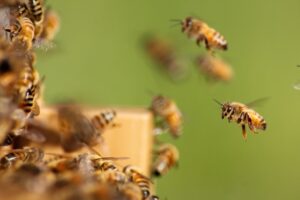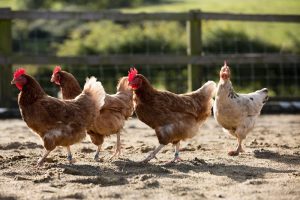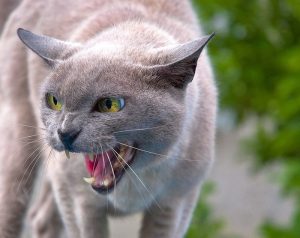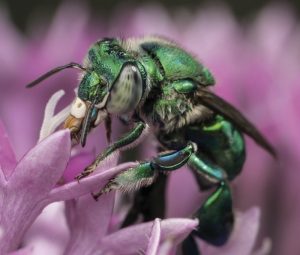Enter your address to receive notifications about new posts to your email.
Articles tagged Behavior
(28 results)
-
Honey bee social behaviors and the long hunt for genetic factors
Researchers used a forward genetic approach to identify genes that affect a social behavior in honey bees. For more than 30 years, honey bee geneticist Robert E. Page, Jr. and his colleagues have sought the genes that influence a colony trait that only emerges from interactions between thousands of individual bees — a social phenotype.…
-
How the fat body regulates fly sleep
The gene Ade2 links metabolism and sleep in the fat bodies of Drosophila. All animals need to eat and sleep. In fact, these critical behaviors are intertwined: animals adjust their sleep needs based on food availability and energy storage. In a Featured article in G3, Yurgel et al. delved into the molecular mechanisms that connect…
-
She has her mother’s coping style
Parent-of-origin effects help determine how lab rats respond to stress. Although your father and mother each contribute a copy of your genes, these copies don’t always play equal roles. Instead, one parent’s gene can have a disproportionate effect on the offspring’s phenotype, resulting in complex patterns of inheritance. In G3: Genes|Genomes|Genetics, Mont et al. examined…
-
The Sleep Inbred Panel: flies with extreme sleep patterns
A new collection of inbred flies provides a tool for studying genetic control of sleep. Sleep is vital for a healthy life, but some of us seem to get by with less snoozing than others. This individual variation isn’t unique to humans; fruit flies also show a variety of sleep patterns. These differences could potentially…
-
Midnight munchers: starved worms can’t sleep
Food-deprivation inhibits the stress-induced sleep response in C. elegans. For many animals, the essential physiological drives of sleep and food are intimately linked. You might have noticed this if you’ve ever stayed up far too late and found yourself craving a snack. Yet because it’s impossible for most animals to eat and sleep at the…
-
Imprinting impulsivity
Imprinted genes can have oppositional effects on adult behavior in mice. Mammalian genomes show the marks of a genetic tug-of-war between mothers and fathers. These imprinted genes are marked by epigenetic modifications, which means the expression of an imprinted allele depends on whether it was inherited from the mother or the father. A new report…
-
Fowl play: the genetics of chicken sociability
A new study reveals genetic changes that affect social behavior in chickens. We have a number of phrases that relate human behavior to that of chickens; for example, when you accuse someone of acting “chicken,” you’re likely calling them a coward. If someone is running around like a chicken with their head cut off, they’re…
-
Battle-scarred flies help us understand the genetics of aggression
Whether it’s a battle over territory or a brawl over a sports game, aggressive behavior is a hallmark of the animal kingdom. The influence genetics has on aggression is undeniable—but the process of determining the genes involved has been frustratingly slow. To better understand genetic factors involved in aggression, some researchers have turned to male…
-
Stressed-out worms hit the snooze button
When you catch a nasty cold, curling up in bed to sleep may be the only activity you can manage. Sleeping in response to stress isn’t a uniquely human behavior: many other animals have the same reaction, and it’s not clear why. While the circadian sleep that follows the pattern of the clock has been…
-
Behind the cover: orchid bee genome
A green, iridescent bee perches on a pink flower, extending its proboscis to reach the sweet nectar inside. He’s not just after a meal—he’s also collecting fragrant substances to store inside his hollow rear legs. Later, he’ll buzz his wings to release the aroma with the hope of attracting a mate. The cover of the…
-
How nematodes sense danger
In critical situations, communication can mean the difference between life and death. If our house goes up in flames, we don’t need to smell smoke to be alarmed as long as someone yells, “Fire!” This isn’t unique to humans; even creatures with much less sophisticated means of sharing information have ways of telling each other…










